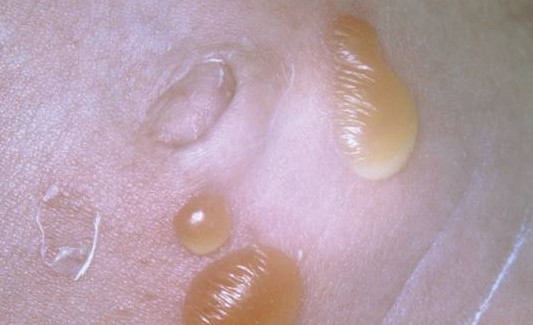What is impetigo (膿瘡病)? - Dr Yeung Ho Hong 楊浩康

Impetigo (膿瘡病) is a common, superficial, and highly contagious bacterial skin infection characterized by pustules and honey-colored crusted erosions. It is primarily caused by Staphylococcus aureus (金黃色葡萄球菌), and less commonly by Streptococcus pyogenes (化膿性鏈球菌). It can be classified into non-bullous and bullous impetigo, with ecthyma (深部膿瘡病) being a deeper form that causes severe erosions and ulcers in the dermis.
Impetigo mainly affects young children but can occur at any age. It spreads through direct contact or contact with contaminated items (e.g., towels, clothing, toys), making outbreaks more likely in crowded settings. As the condition progresses, the infected area becomes red, swollen, itchy, and painful; scratching may lead to secondary infections, worsening skin damage and affecting appearance.
Non-bullous impetigo presents as small pustules that rupture and form honey-colored crusts, while bullous impetigo results from bacterial exfoliative toxins targeting intercellular adhesion molecules (desmoglein-1), causing epidermal cell separation and larger blisters. Both forms are highly contagious but differ in clinical management.
Treatment involves regular, gentle wound cleaning to remove crusts and keep the area dry, with good hand hygiene to prevent spread. For mild cases, topical antiseptics like 'hydrogen peroxide 1% cream' (過氧化氫 1% 霜) or 'povidone-iodine 10% ointment' (聚維酮碘 10% 軟膏) can suppress bacterial growth; topical antibiotics such as 'fusidic acid' (夫西地酸) or 'mupirocin' (莫匹羅星) are effective for non-bullous impetigo. For bullous or widespread cases (>3 lesions), oral antibiotics like 'amoxicillin-clavulanic acid' (阿莫西林-克拉維酸), 'cefalexin' (頭孢氨苄), or 'erythromycin' (紅黴素) are used for systemic control.
Prevention relies on personal and public hygiene. Avoid sharing towels, clothing, or personal items, wipe with clean towels after going out, and maintain clean indoor environments with proper disinfection to reduce bacterial spread.
Common misconceptions include assuming all honey-colored crusts indicate severe infection or that pustules never heal on their own. In fact, most cases heal quickly with proper care and treatment, without long-term health impact. Accurate understanding prevents unnecessary panic and overtreatment.
For instance, a parent noticed their child had rashes and peeling after school, initially diagnosed as tinea pedis but later confirmed as mild impetigo. With timely topical antiseptics and improved hygiene, the condition resolved quickly, and the skin normalized, underscoring the value of early detection and scientific treatment.
In summary, impetigo (膿瘡病) is a superficial, highly contagious bacterial skin infection marked by pustules and honey-colored crusts. With regular cleaning, appropriate topical or oral medication, and good hygiene, most cases resolve rapidly. Parents should recognize symptoms early and take preventive steps to avoid spread and secondary infections, preserving skin health and quality of life.
